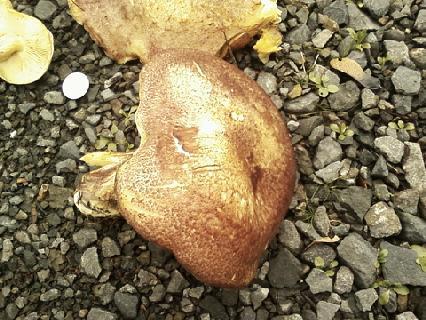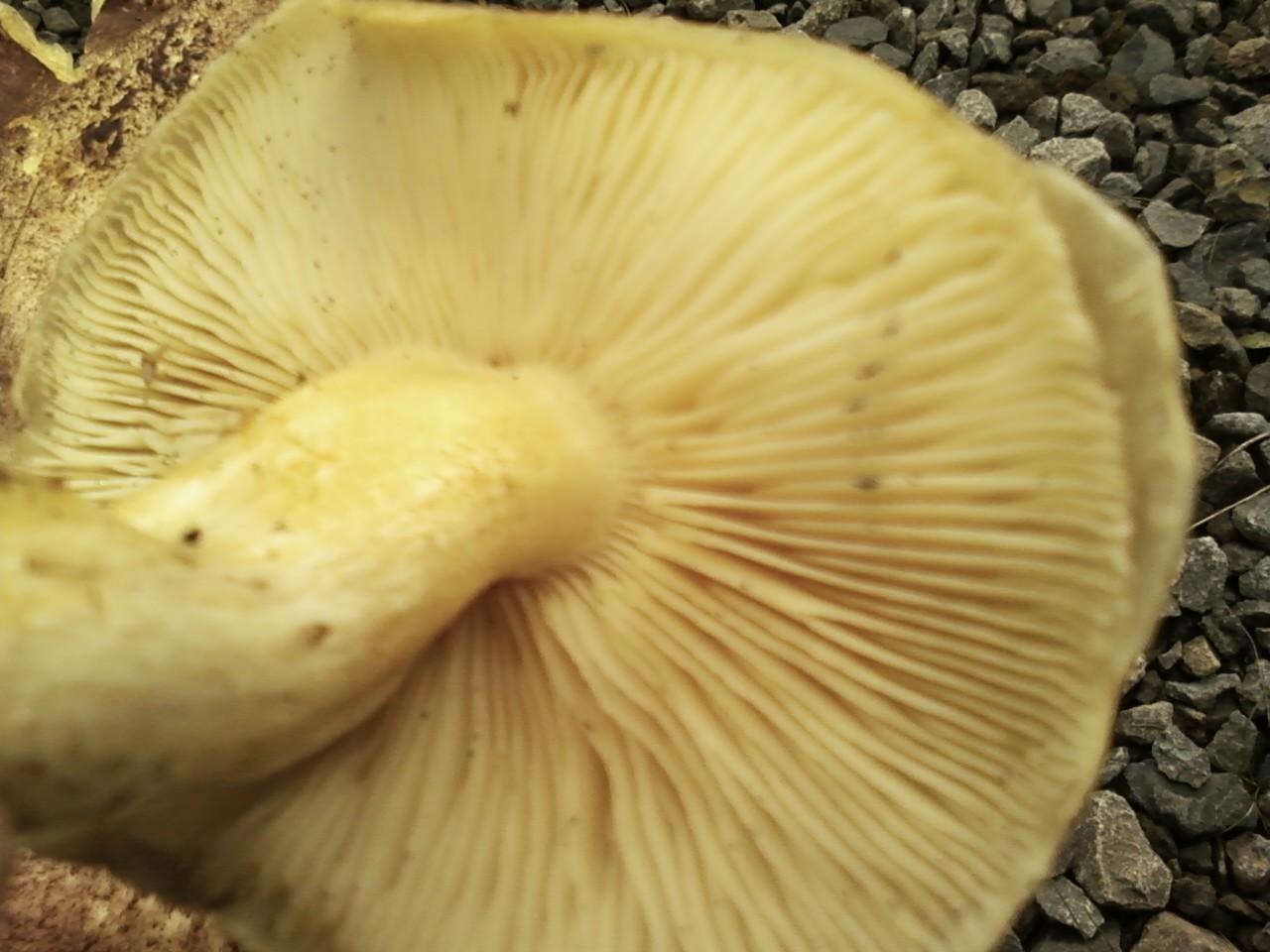Tricholomopsis rutilans
(common names: Plums and Custard and Red-haired agaric,
Posted by Lisa - - - - - - Scroll Down to See the Discussion
Lisa: I found a few groupings of these striking fungi,
and wanted to confirm identification since it's the first time that I have encountered this.
The attached photos are poor-quality from my cellphone; apologies for that! The data:
Large in size (reference coin near the center of three is a quarter)
Growing on rotting conifers, clustered around the base in particular.
I think that the conifers are pine.
Yellow flesh; burgundy fibrils on cap and stipe.
Cap subviscid.
Gills adnate and notched; seemed that both were present.
Spore print unmistakably white
Odor mild
Cross-referenced Arora with Trudell...seemed to match up.
May try to taste later on to confirm (or deny) rotting wood flavor.
Mike P: I have not run across Tricholomopsis rutilans myself,
so I'm hardly an expert, but your description, the habitat and time of year,
and your photos match my mental image of it very well.
MatchMaker lists no look-alikes (nor do O.K. Miller nor Lincoff),
at least none with the reddish coloration.
I would call it a match . . . let's see what others think.
Judy: Your i.d. is right as the coloring is distinctive,
even with the weather conditions we have been having.
But in your list below, you mention the cap is subviscid.
Please take into consideration the weather over the past several days on anything
thing you try to identify.
The descriptions you have read all mention dry cap, and you mention “cap subviscid”.
The weather has been very wet and cold, which causes degradation of the cap surface,
so if you used that feature for identification,
it could possibly lead you to other genera.
As to sampling something new for the first time, make sure they are young,
fresh and firm. Wet weather (even cold wet weather) can promote bacterial
and fungal growth in the gills and flesh, which can make for off flavors and upsets.
Lisa: Thanks for your input, Judy. Guess I'm a little confused on how to describe
the pileal surface....I found the best description of the
texture from "How to Identify Mushrooms to Genus I: Macroscopic Features".
"Subviscid" was the closest approximation- but perhaps it could be
"dry" if environmental conditions were as well,
so I should have noted this in that description.
Fortunately, the color is distinctive as are all of the other features.
Of course caution will be exercised when considering edibility:
it is not worth the risk if food poisoning is a possibility.
Some of the specimens are in good condition....many are not.





